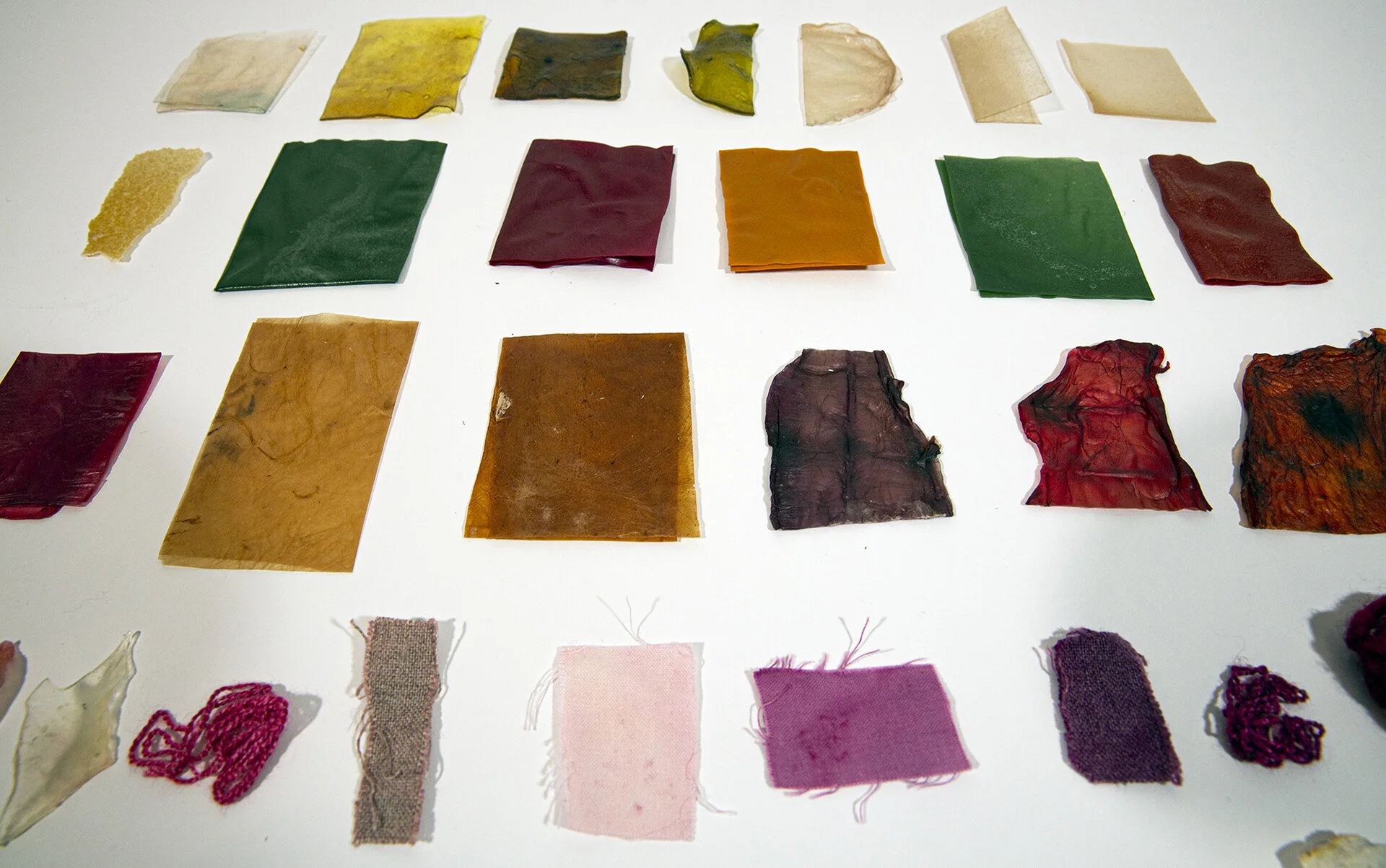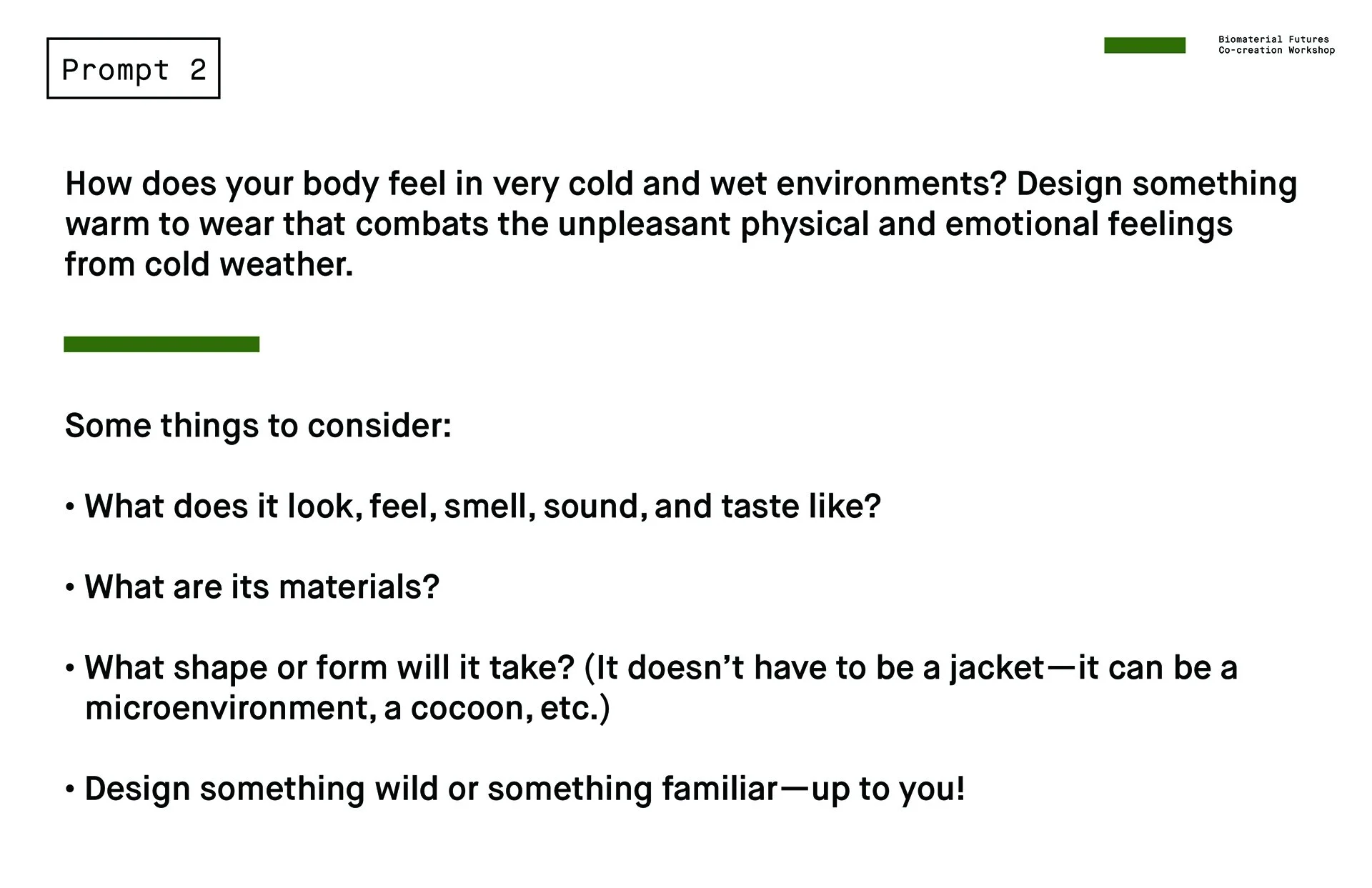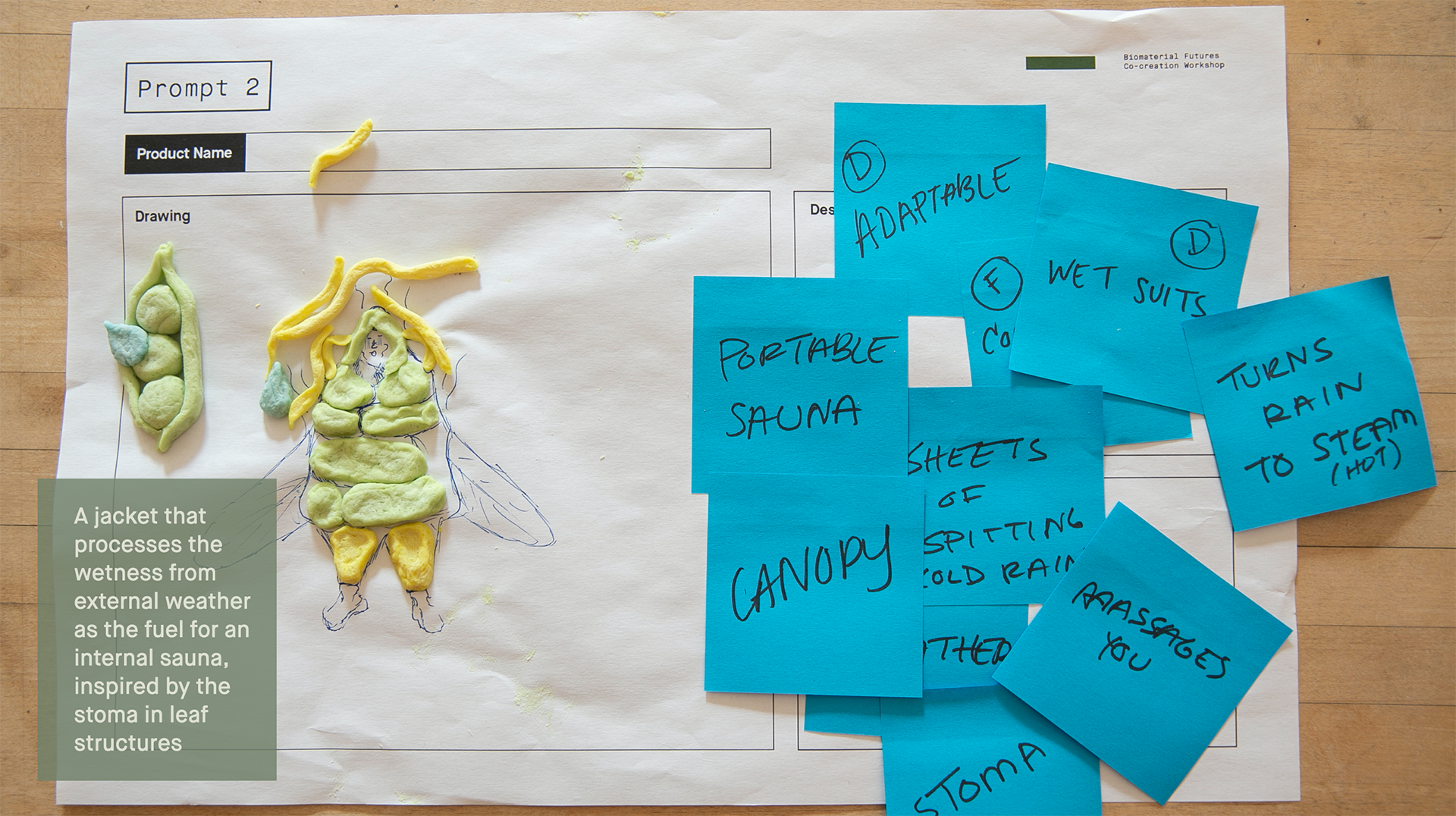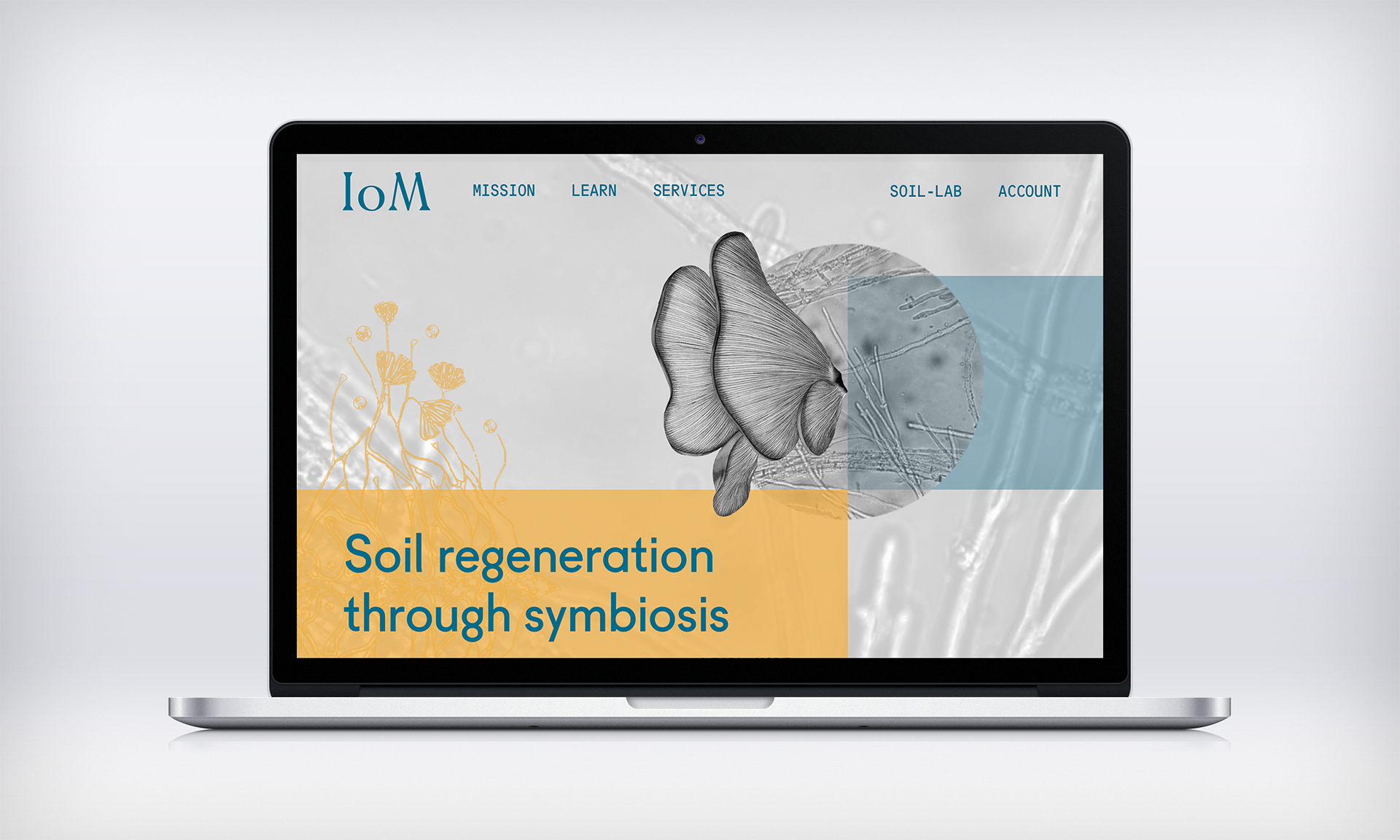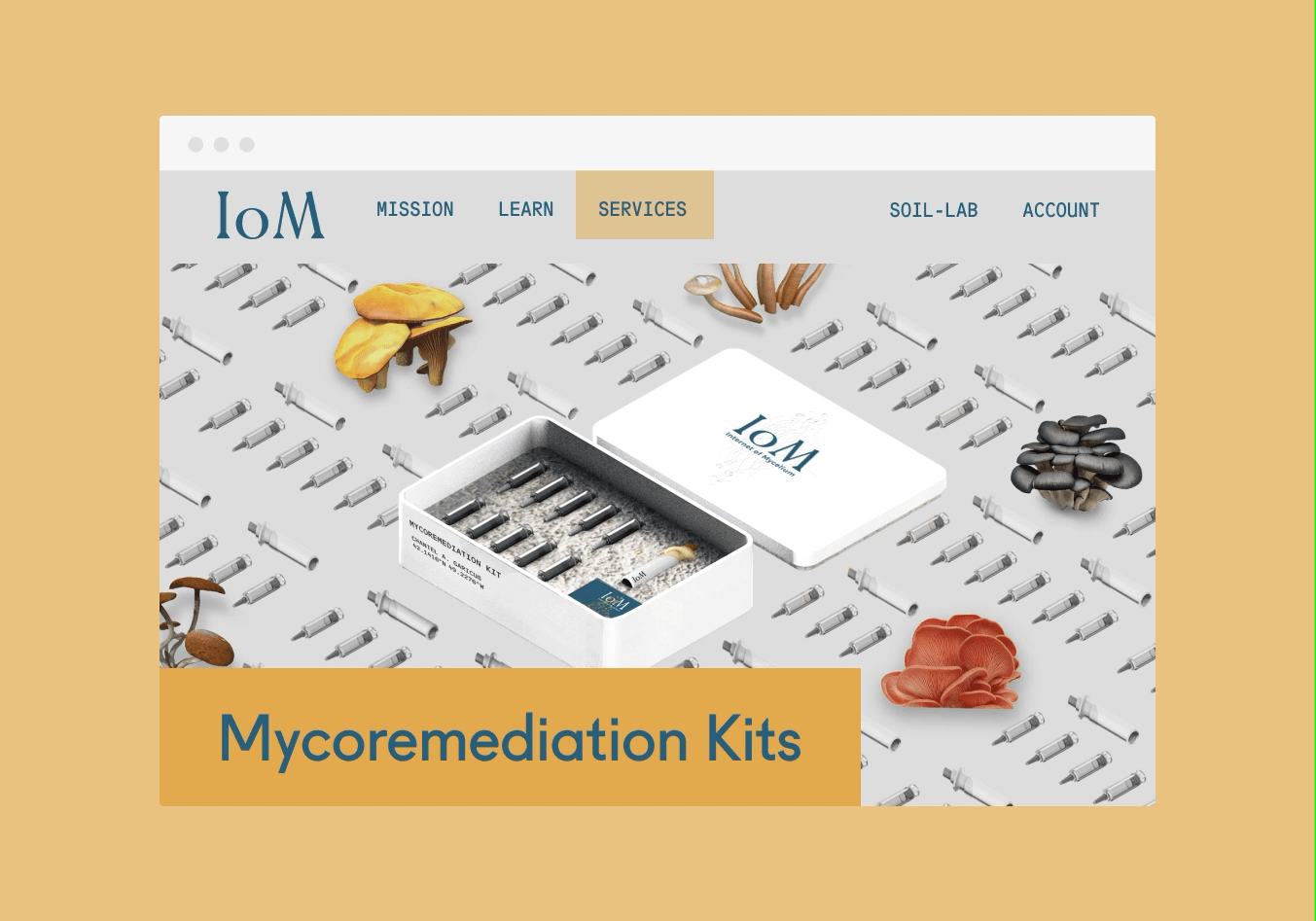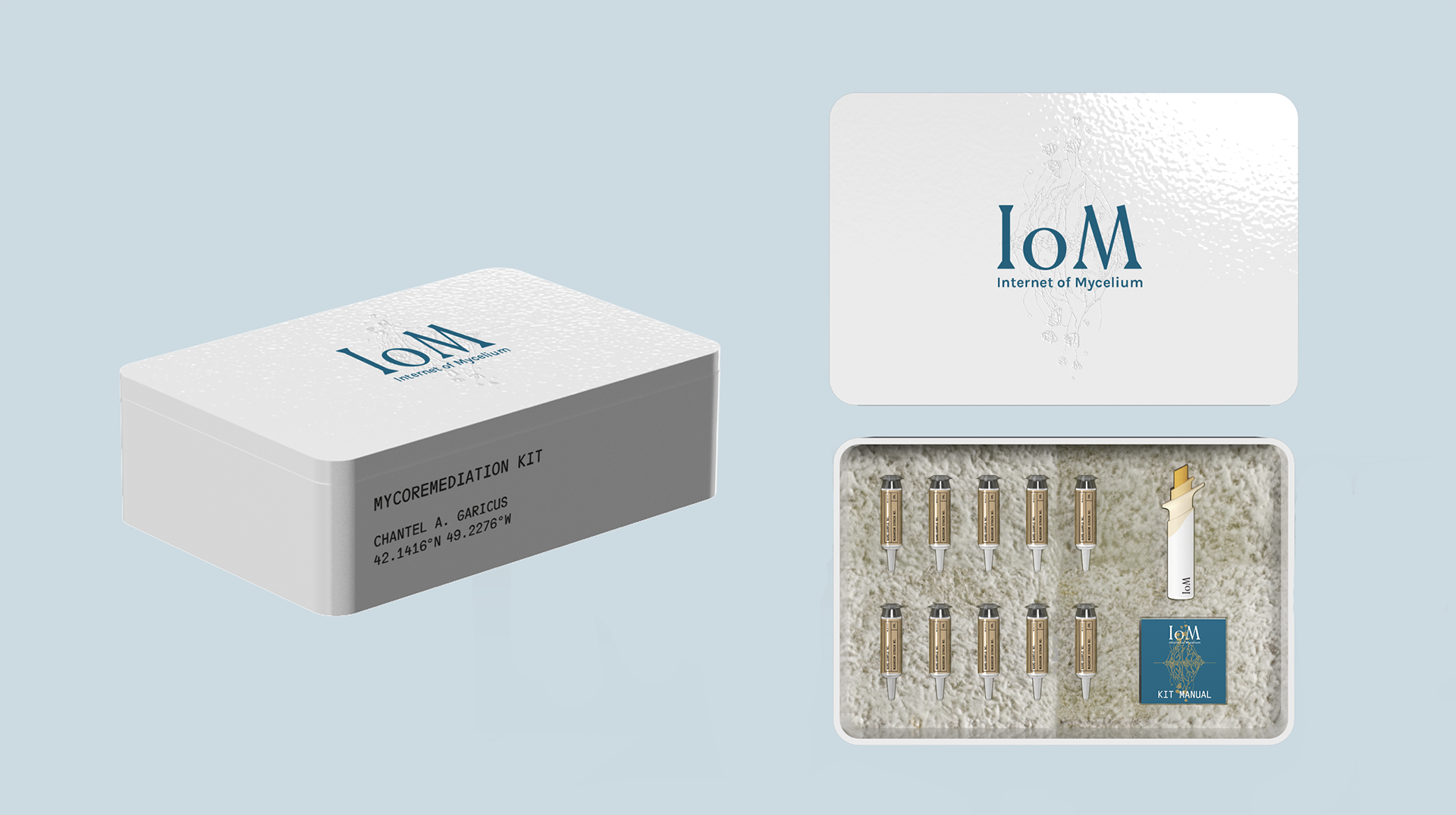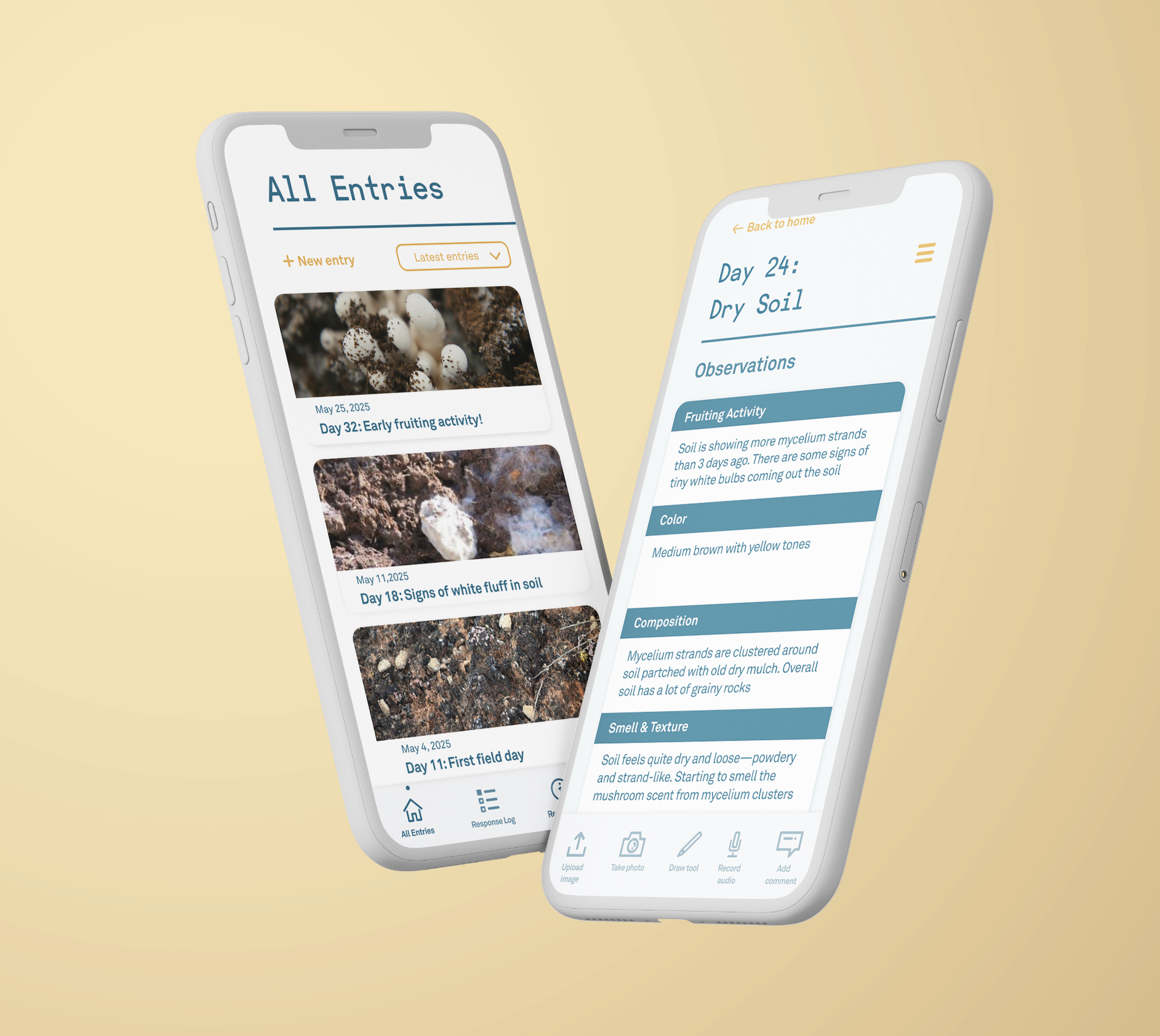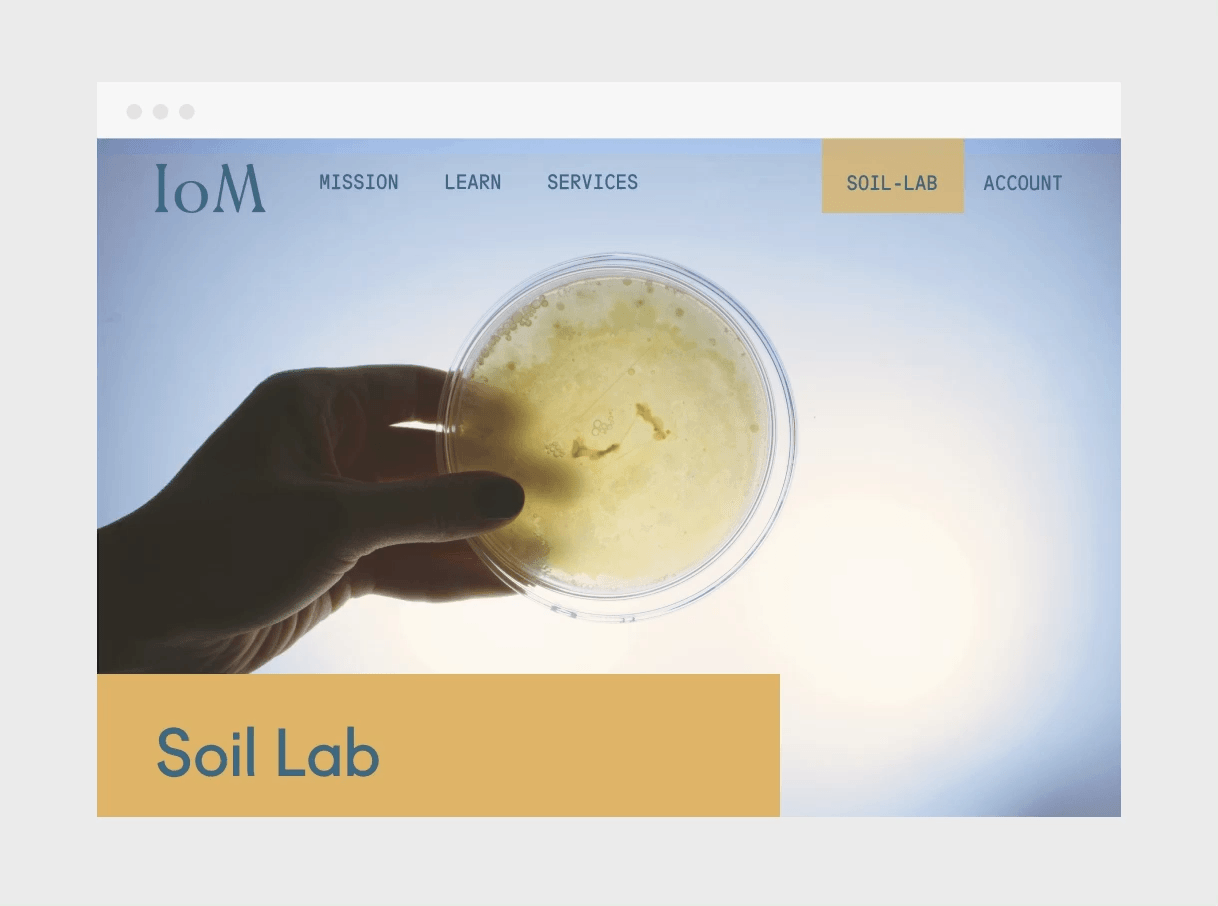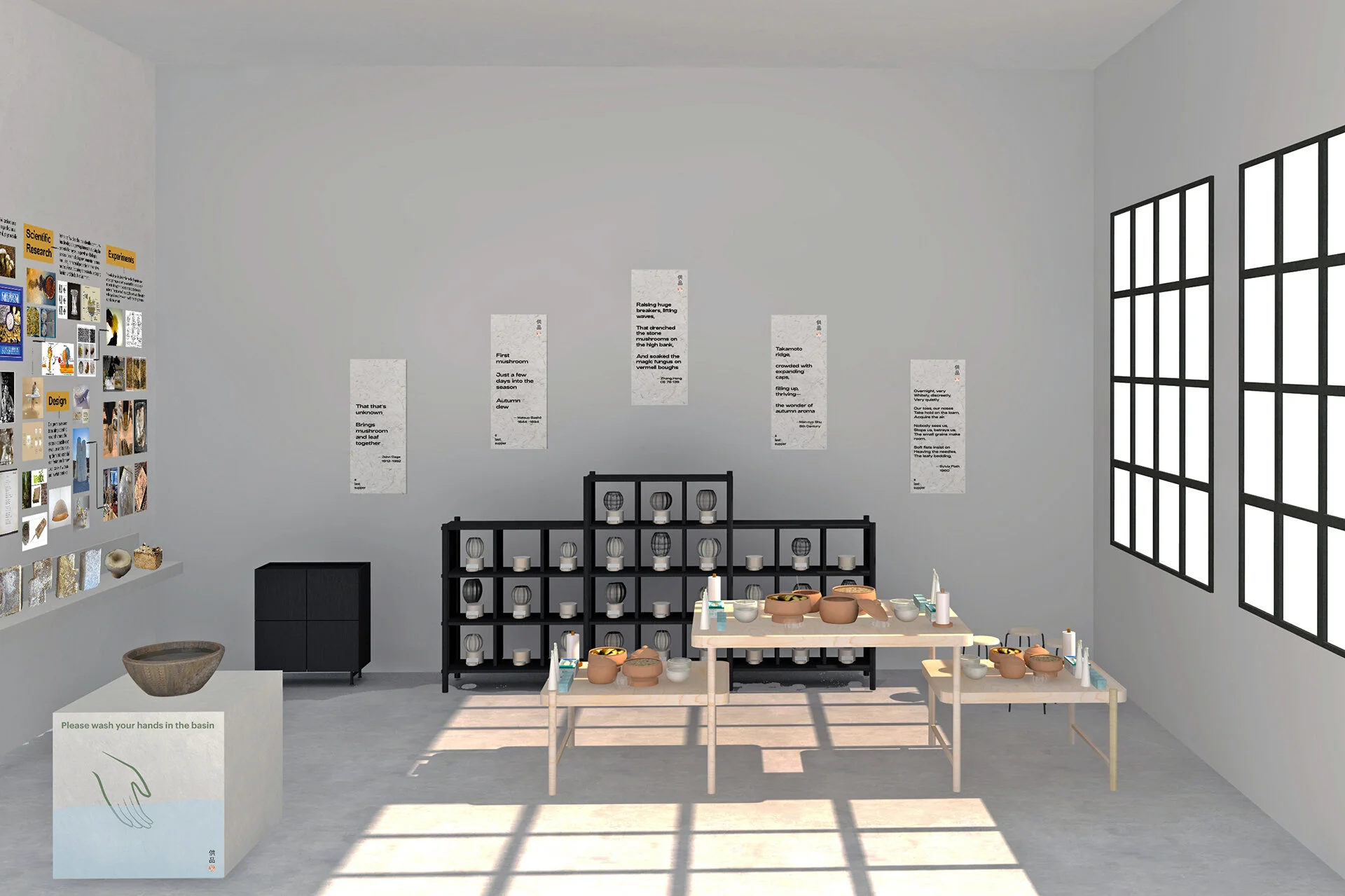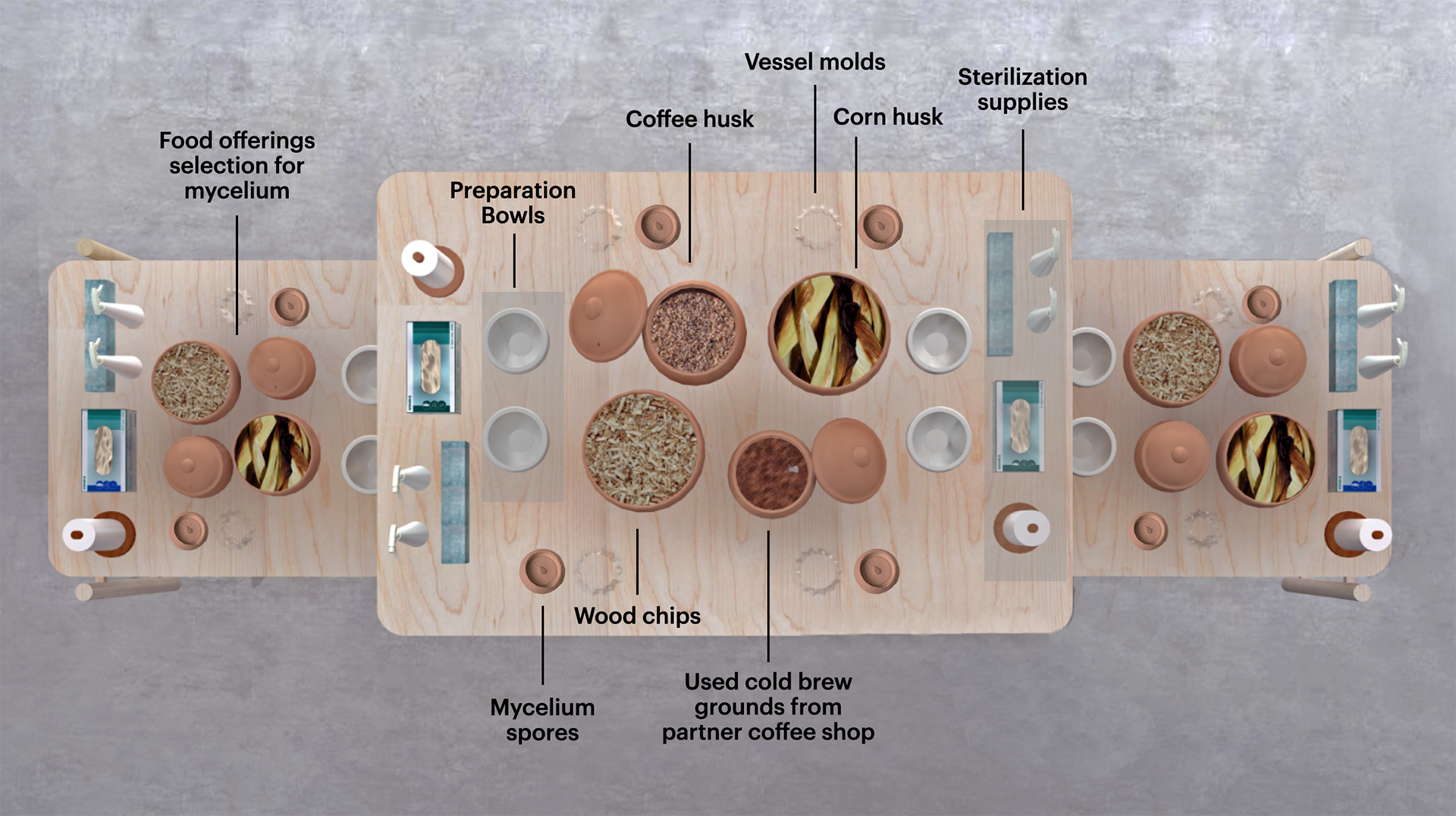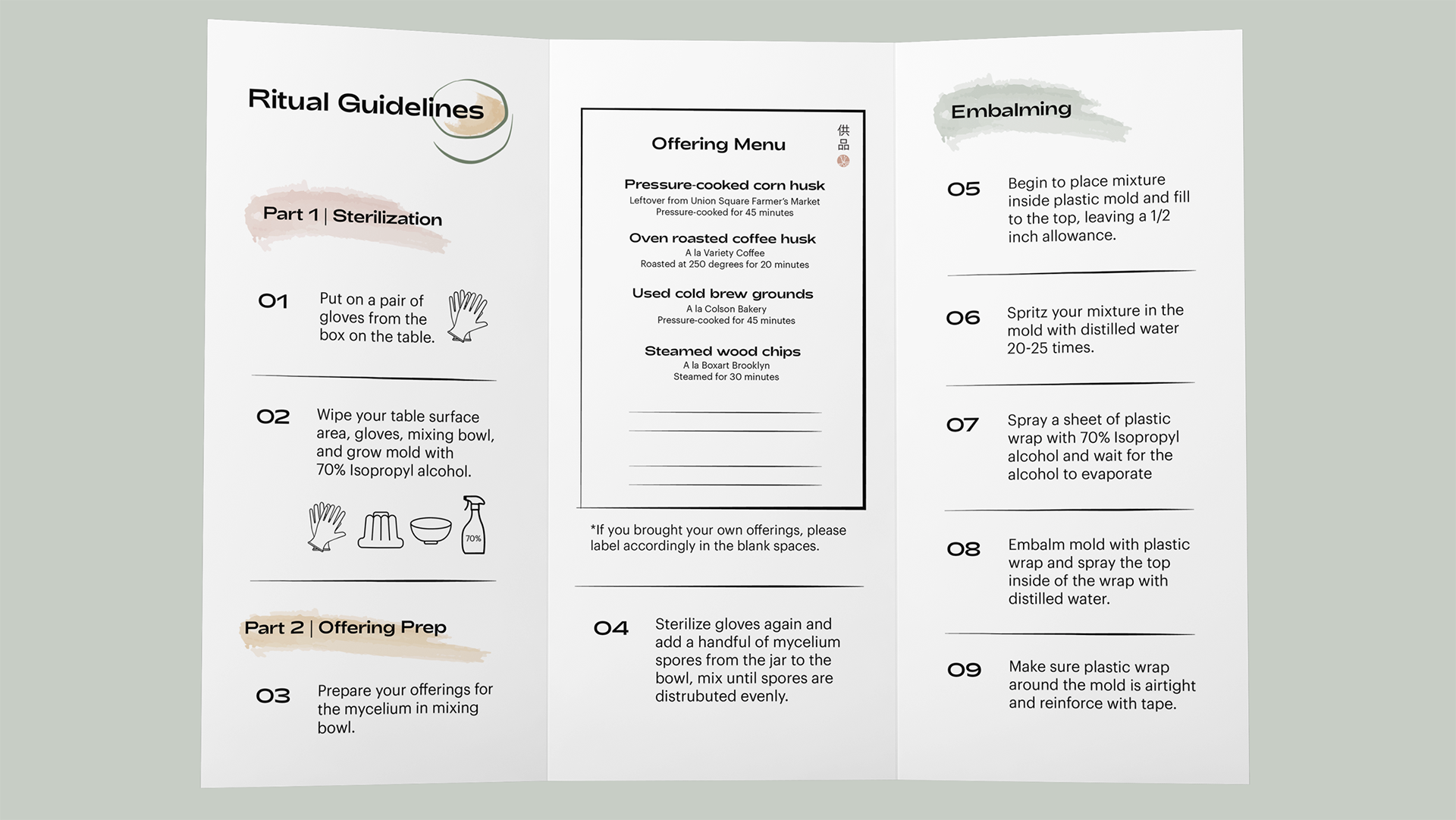Fruiting Bodies: Fungal Futures for Collaborative Survival
Helen Chen’s thesis, Fruiting Bodies: Fungal Futures for Collaborative Survival, explores how new material ecologies and interspecies consciousness—the acknowledgment that we live in complex ecosystems involving both human and non-human life—can create a paradigm shift in current industrial modes of production and consumption. In order to address the urgency of landfill and chemical waste streams around the world, she began her thesis exploration with prototyping biomaterials ranging from bacterial cellulose to algae-based bioplastics and mycelium.
Mushrooms see damage as an opportunity for repair.
They help forests grow in daunting places.
These materials experimentations ultimately led her to focus on creating a body of work looking at mushrooms and their mycelial networks as both metaphors for a collaborative interspecies survival and a feasible solution to help remediate and heal the planet’s ecological damages. Going beyond traditional formulas of design methods, Helen utilizes the framework of “form, function, and care” (a principle introduced by LinYee Yuan) to design for relational innovations that decenter anthropocentric perspectives and embed the principle of invested care for other species.
Prototyping with Biomaterials
As a part of her technical research, Helen spent the past six months volunteering as a teaching assistant for biology and biomaterial workshops at Genspace, a community bio lab based in Sunset Park, Brooklyn. At Genspace and the SVA studios, she prototyped biomaterials using bacterial cellulose, algae-based ingredients, mycelium, and food waste for biocomposites.
Co-creation Workshop
Inspired by the education workshops at Genspace, Helen hosted a Biomaterial Futures workshop at the PoD studio with 12 participants from different professional backgrounds and all over New York City. She wanted to showcase the materials she had been prototyping with participants and collectively think about how they can use biology as a framework, process, and tool for designing ecologically sustainable futures. The workshop took place in three parts:
Familiarizing themselves with the contents on the materials table and filling out sensing worksheet
Paper-making exercise with recycled paper and foraged leaves from New York City streets
Breaking out into groups to work on design prompts
Furthermore, Helen wanted the participants to consider the following questions:
•How might we create spaces that allow for the democratization of scientific knowledge-making, and the active inclusion of a multiplicity of voices around biomaterials innovation?
•Who are we designing for?
•How might we include these stakeholders in the design process?
Internet of Mycelium: Mycoremediation Kit
Internet of Mycelium (IoM) is a company that provides mycoremediation services to urban gardening communities to tackle the growing problem of deadly soil contamination in cities around the world. It is a project about human collaboration with mushrooms to regenerate our urban soil ecosystem in a holistic and affordable approach through nurture and care. Mycoremediation is the process of growing mushrooms to remove soil and plant toxins via the organism’s ability to decompose toxic matter and replenish needed nutrients using its root system as a nurturing and protective infrastructure under the soil.
IoM’s main product is a customized mycoremediation kit, with spores from a lab-engineered mushroom strain specific to your soil’s remediation needs. The average length of the mycoremediation process with the kits is about 12-15 weeks, including sample collection, soil testing, product shipping, and the DIY mycoremediation process. The kit comes in a syringe and capsule system for life maintenance and transport reasons. Additionally, to reduce waste footprint and, the syringe top is reusable. It is also intuitive and ergonomic to use with a double-button ejection system.
Internet of Mycelium: Myco Journal App
IoM’s services empower communities to directly respond and reclaim environmental resilience. The mycoremediation process, which takes about 6-8 weeks, should be regularly monitored. Thus, progress rests on the user’s regular maintenance, embedding the principle of invested care in the process. In consideration of this, Helen designed the Myco Journal App, IoM’s centralized note-taking, and information-sharing platform to allow users to best provide this invested care. Users are encouraged to make entries every 2-3 days by uploading photos and filling a series of key observation points: fruiting activity, soil texture, etc. They can share their journal entries with the IoM community.
These journal entries will also appear (with the user’s permission) on the website’s Soil-Lab, a digital space for community knowledge-sharing. It also has IoM’s database of soil information at different geotagged locations from testing records.
To prototype the app’s key concepts in real life, Helen delivered mushroom spores to 8 participants and held a zoom workshop where we prepared to grow reishi mushrooms from food waste. She then started a Slack channel for the participants to share updates of their observations every few days with any questions that she tried her best to answer. The channel quickly evolved into a platform for knowledge sharing as people in the group began commenting on each other’s posts.
A Last Supper: Mycelium as Provocation
A Last Supper is an interactive exhibition that invites participants to engage in the process of growing mycelium vessels with their own recipes of food waste in a ritual format akin to ancestral offering ceremonies in China (供品 gong pin).
The goal of this experience is to provide a relational innovation that sparks empathy and care within the participants in their relationship to waste, consumption, and interspecies collaborative survival.
Through the experience, participants are encouraged to reflect on how things we consider to be at the end of their life can serve as a source for the growth of other life. Can these new relationships change our perspectives about our role within the planetary ecosystem?
Helen writes, “Mycelium is fascinating because it is an organism that grows life through decomposing other matter. In placing mycelium as the focal point of an offering ceremony meant for the deceased, the experience aims to look at the circularity of life and death through decomposition and recomposition.”
Amid the COVID pandemic, Helen placed A Last Supper into virtual reality, extending the reach of the experience as well as emphasizing that her thesis is not just about the literal growing of mushrooms, but also an exploration of materiality and interspecies futures in social and emotional contexts.
To learn more about Helen Chen’s work, take a look at her projects in more detail at www.helenchen.co.














